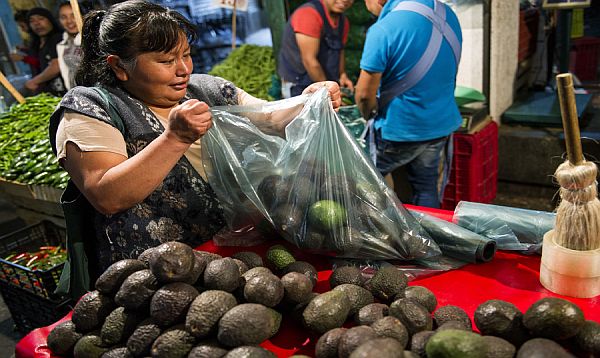Mexico City - From tequila to avocados, the state of Jalisco in central Mexico is seeing its exports to China increase, largely thanks to the Asian nation's expanding middle class.
Still, exports of avocados to China are somewhere between the thoughts of some local officials and a development blueprint.
On Singles' Day, the shopping festival on November 11, consumers bought nearly a million avocados through Tmall, part of e-commerce giant Alibaba. Such a scenario has led some Mexican officials to believe avocados - the bright-green, protein-rich fruit that Chinese consumers have become fond of - will be another export with notable potential for growth.
Ignacio Gomez, a spokesman for Jalisco's Association of Export Avocado Producers, said he is confident his state's produce will be available to Chinese consumers soon.
Right now, only Jalisco's neighboring state of Michoacan ships avocados to China.
"It is a market that is responding very well, and the trend indicates that in a few years China will be a very, very important market for Mexican avocados," Gomez said.
Jalisco exports 80,000 metric tons of avocado to countries in Europe, Central and South America, and the Middle East, as well as Canada and Japan.
One of Mexico's breadbasket states, Jalisco started exporting tequila to China five years ago. In June, the state made its first shipment of cranberries to the Far East, sending 420 cases. "We have to continue to strengthen the relationship with China, which is exceptional," said Hector Padilla, secretary of rural development in Jalisco.
"It's a market that is moving forward, that is growing, that is diversifying, and that we are cultivating so that volumes keep increasing."
He said producers of Jalisco's other well-known fruits, such as berries, mangoes and limes, also see China's market as a great business booster.
"The space (for growth) in China is huge. They have enormous purchasing power that is growing year by year," Padilla said. It's "just a question of time" before exports to China take off, he added.
"We are barely in the initial stage of penetrating the Chinese market."
Mexico benefited from China's growing consumer demand this year, with its exports to the Asian giant increasing 28 percent, the highest rate among its trading partners, and far higher than the 9 percent growth in trade it saw with its neighbor to the north, the United States, according to the Inter-American Development Bank.
Government data show trade exchanges between Mexico and China grew a whopping 185 percent from 2006 to 2016, rising from $26 billion to $74 billion.
Direct investment
In recent years, Mexico has also received more than $74 million in foreign direct investment from China.
Mexico's produce sector is looking to diversify its exports given the climate of uncertainty affecting the two-decade North American Free Trade Agreement between Canada, the US and Mexico, which has come since U.S. President Donald Trump took office.
China's Latin American purchases were the most dynamic this year, and centered on basic products that are seeing higher prices compared with previous years, according to economist Paolo Giordano, an IDB expert in trade and integration.
After four years of negative growth, Latin America saw a 13 percent increase in exports in 2017, driven in large part by increased demand from China, according to IDB.
The region's small and medium-sized businesses are also looking to break into Asian markets, especially China, said Alejandro Salcedo, head of the Mexican chapter of the Latin American Association of Micro, Small and Medium-Sized Businesses.
Source: China News Daily


